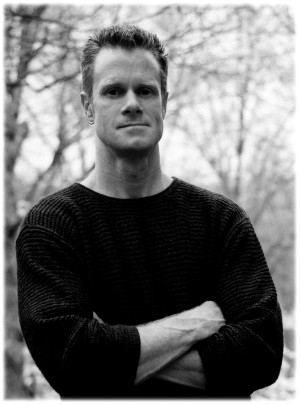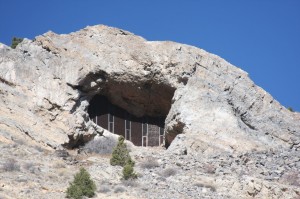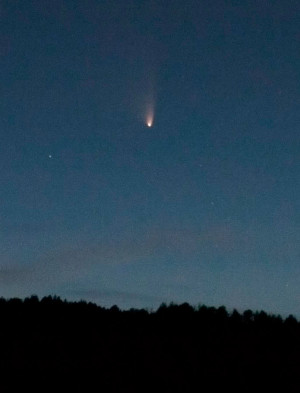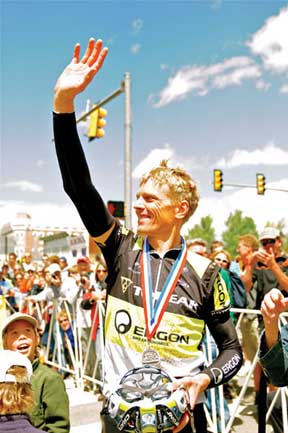by George Sibley
I’m writing on the first real day of winter over here in Gunnison – just a couple inches of snow so far (more supposed to come), but it feels and looks like winter.
Upvalley, in Crested Butte, up in the mountains, it is probably still snowing hard – I hope so anyway. This is the time of year when I miss living in Crested Butte, which gets more than twice the precipitation we get in Gunnison, just thirty miles away but a critical 1,200 feet higher. Up there, people pray for and dance for snow because the whole winter economy is predicated on snow. Snow and people on airplanes – both have to come in quantity. But the entire Southwest is also dependent on the snow that falls in those mountains. So, let it come.
The old miners in Crested Butte used to call snow “the only crop that never failed” – mostly true enough, although it has occasionally failed. They also used to say, “You can’t eat scenery,” but most of Central Colorado has been surviving economically mostly on a diet of commodified scenery for the past several decades. In any case, there is now no reason for being in Crested Butte if you don’t celebrate snow, and they do celebrate it there. A lot of snow in Crested Butte was a lot more enjoyable than a little snow in Gunnison, where it is mostly just something to shovel out of the way.
Down here in Gunnison, winter brings more cold than snow. The town is located in a basin at the confluence of several big tributary valleys. And since cold air, like water, flows downhill, these valleys all drain cold air down to Gunnison, where in windless times it can accumulate in a lake of cold air a couple hundred feet deep, the only “drain” for which is the set of narrow canyons downriver. This is a classic inversion – a layered lake of cold, dense air trapped under the high-pressure areas that often settle over the Colorado Plateau and Southern Rockies for weeks at a time in winter. A cold lake into which we fart bubbles of carbon gases from furnaces working overtime, cars idling to warm up every morning, wood smoke and diesel particles, et cetera, until the cold lake is befouled enough to be almost visible. Looking up at the low weak winter sun can be a lot like looking up from underwater. A high ratio of cold to snow makes for a mean time.
In the mean time (manner of speaking), my sense of optimism, energy level and general enthusiasm for life all tend to follow the mercury, especially on gray, cold days like this one. But today there is a lot in the cultural environment, as well as the natural environment, that makes winter feel like a good metaphor for life in general. Nationally, most of us are in the fifth – or is it sixth? – year of what is settling out to be a chronic near-recession – an “economic winter.” Not for everyone, of course. This morning, one of my liberal pinko commie websites had an editorial taking an askance look at a recent Washington Post survey story, which boasted (to its advertisers) about the “superzip” created by half a dozen contiguous zip codes in the D.C. area that together create one of the wealthiest enclaves in the nation. The editorial called it America’s biggest “gated community,” and wondered why anyone not on the inside would expect those who are on the inside to give a fig about those of us on the outside.
I confess that I have always been one of those demi-Pollyannas who said when someone started railing against the government, “But the government is us.” Now, however – here in the mean time – I no longer believe that. At best, I believe that what it represents is the worst in us. With the exception of a handful of Congressmen and Senators (Elizabeth Warren), the three branches of government all appear from here, down on the ground, to be securely in service to the denizens of their own Beltway gated community and other similar enclaves across the country. They are not us or ours.
But rather than get into a rant about that, I want to get back to that “economic winter” – the recession that the Beltway gated community felt it had resolved once the financial sector was again able to make money betting against America. As is usually the case, the recession did not hit quite so hard in Central Colorado as it does in the urban-industrial mainstream, because economically we are always slightly-to-somewhat depressed. Wages are chronically low in the amenities economies; costs are always high; and big economic opportunities are limited by low populations and large distances.
This is something that most of us accept as part of the tradeoff for living where we do. Here in the Upper Gunnison, we episodically decide to do something about this eternal economic winter and form a new “economic development” organization. The discussion always begins with how to diversify the economy, but eventually comes down to how to get more people to the ski area, or more students for the college, or both. But nothing really works dramatically. Just staying “flat” seems like an achievement today.
Another way of looking at that, however, is to say we are beginning a forced experiment with a no-growth economy. Many people say that it is ultimately necessary, and many others say it is impossible, and no one seems to want to just jump into it. What I am wondering is whether it is something we get to choose, or is it something (like climate change) that’s here and that we are just going to have to learn how to live with.
I also wonder how soon the same thing will be happening in the mainstream economy, where unemployment remains a serious problem, earnings (outside the gated communities) remain nearly flat, and the corporations that now run our society are sitting on their cash rather than investing it in growth.
I tend to agree with the economists like Paul Krugman who argue that the nation will not “recover” from this economic winter – not a full-blown recession, just an ongoing mean time – until the government injects some serious public spending into the equation. And heaven knows there are places where we need some serious public spending. Most of our national infrastructure dates from some previous episode of public spending, which means that most of it has been aging at least since the Reagan Revolution. This fact is observable in the stories of breaking bridges, dams held to reduced capacities due to structural problems, water systems leaking as much as they carry, et cetera. Beyond that, there is the matter of developing and implementing a realistic energy policy that takes into account the challenges posed by climate change.
Launching into all of that could put a lot of people back to work, if done right. But even the humane economists like Krugman – the ones who don’t worship the abstract “market” – display a certain vagueness about what “recovery” means. The word “recovery” itself suggests a return to some previous situation regarded as more favorable. So does that mean a return to a full consumer culture, in which we are all employed in some aspect of converting the finite and diminishing resources of the planet into disposable goods for a finite but expanding global population? In the metaphor of seasons, that just sounds like “last summer” again (which always leads to next winter). Is there no better way to inhabit the planet?
Economic historian Richard Smith, in a long essay in “Real World Economics Review,” concluded a detailed analysis of all the problems created by all-out consumer capitalism with the suggestion that the only thing that really matters now is a good set of answers to the question: “What’s your alternative?” Can a “no-growth economy” be something more and better than just deprivation? What spring renaissance blooms at the end of this winter?
That may be the question to be contemplating in the mean time, the winter of our discontent. We should probably not look for answers or even help from the D.C. Beltway gated community. If we need to come up with some different and less consumptive way to enjoy life on the planet, it may have to happen down on the ground in the places where we already have a head start on measuring our wealth in intangibles. What’s our alternative?
Meanwhile – pray for snow and keep shoveling.
George Sibley winters in the Upper Gunnison River basin at the bottom of a lake of cold air.





